|
Britain Posts: 609
6/1/2017
|
In 2000 spent a lot of time backpacking the Myers area of the wilderness. On the western side up against the mountains to the VOM theres a palm grove. I understand the Indians used to periodically burn them. Must be some Indian ghosts laying about. Location is about 2 miles east of the freeway tunnel at Mountain springs. Anyone else been there> Are these original palms? Plan on going back in next year to poke around a bit more.
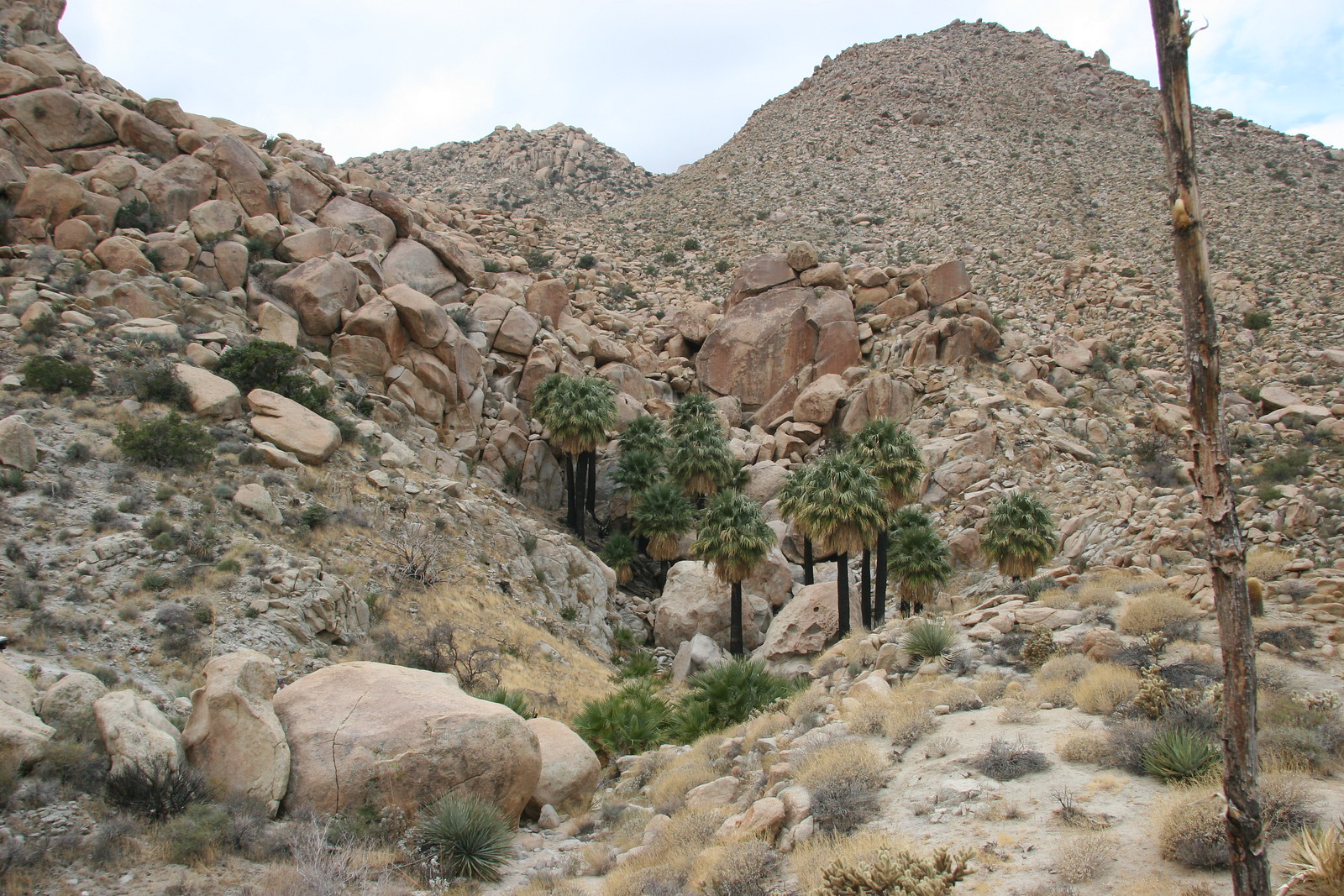
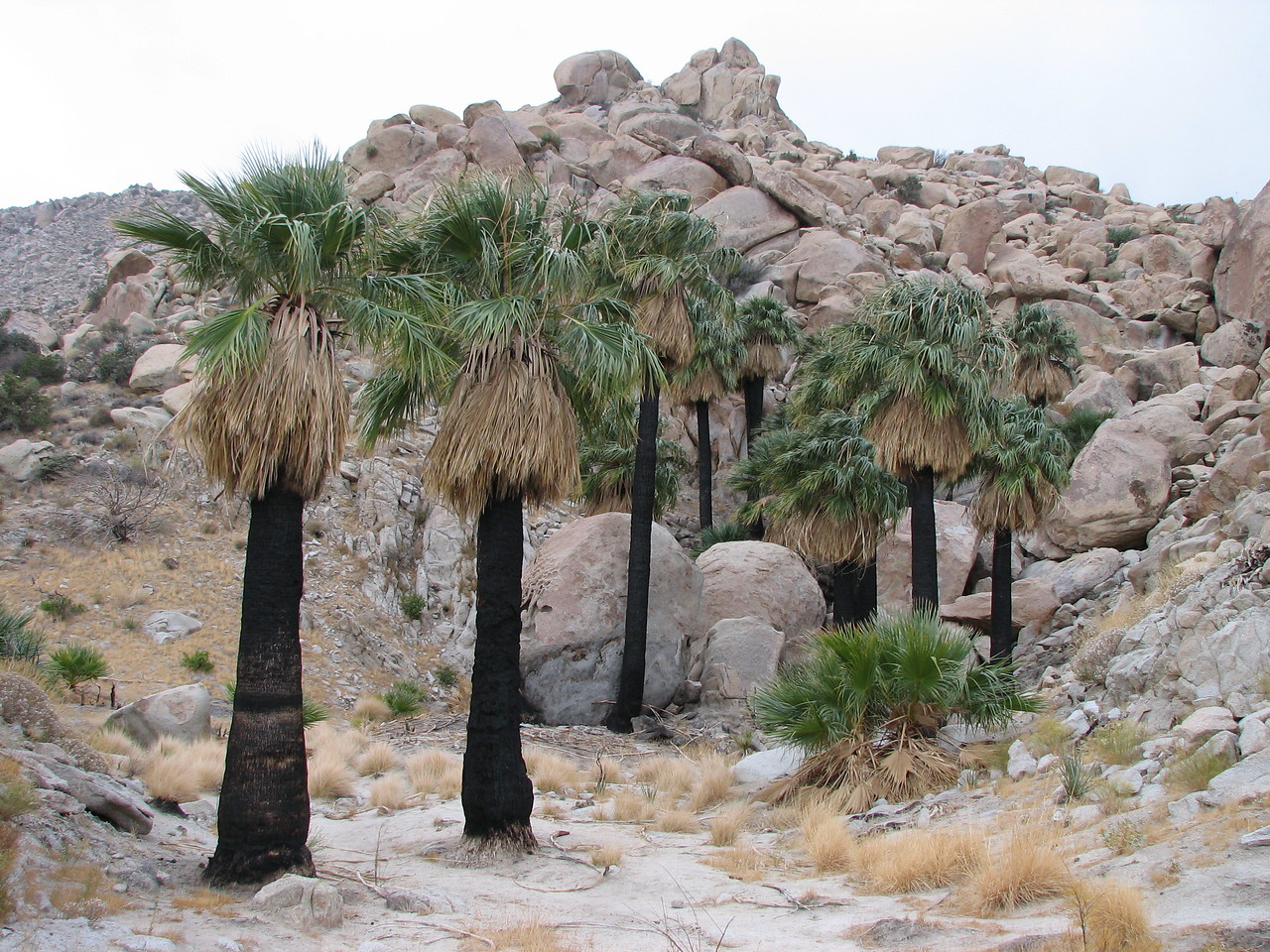

--
Cant drive 55
Britain
http://icorva.com
|
|
|
link
|
|
dsefcik Administrator Posts: 2631
6/2/2017
|
There are quite a few pockets of palms in the Myer/Boulder Creek area. While I have not found anything to confirm, a ranger once told me that palms can look burnt like that after a long drought or absence of water.
--
http://www.sefcik.com
http://www.darensefcik.com
http://www.carrizogorge.com
|
|
|
link
|
|
tommy750 Posts: 1069
6/2/2017
|
If you keep climbing another 300 ft up, you'll find another palm grove and if you continue climbing to the top and then head south a couple miles, you'll get to Peak 4004 (a great vista) or make it to Valley of the Moon. Have done it a couple times as a day hike from Old Hwy 80 in the island and it's a great trek through a very desolate area. Was before I had much hiking experience and I did the 10ish mile trip with a couple liters of fiz water and returned in the dark aided with only a tiny flashlight. Had the usual nocturnal meet and greet with BP who thought I was semi-insane. Here's a few pics from 2006:
The upper grove
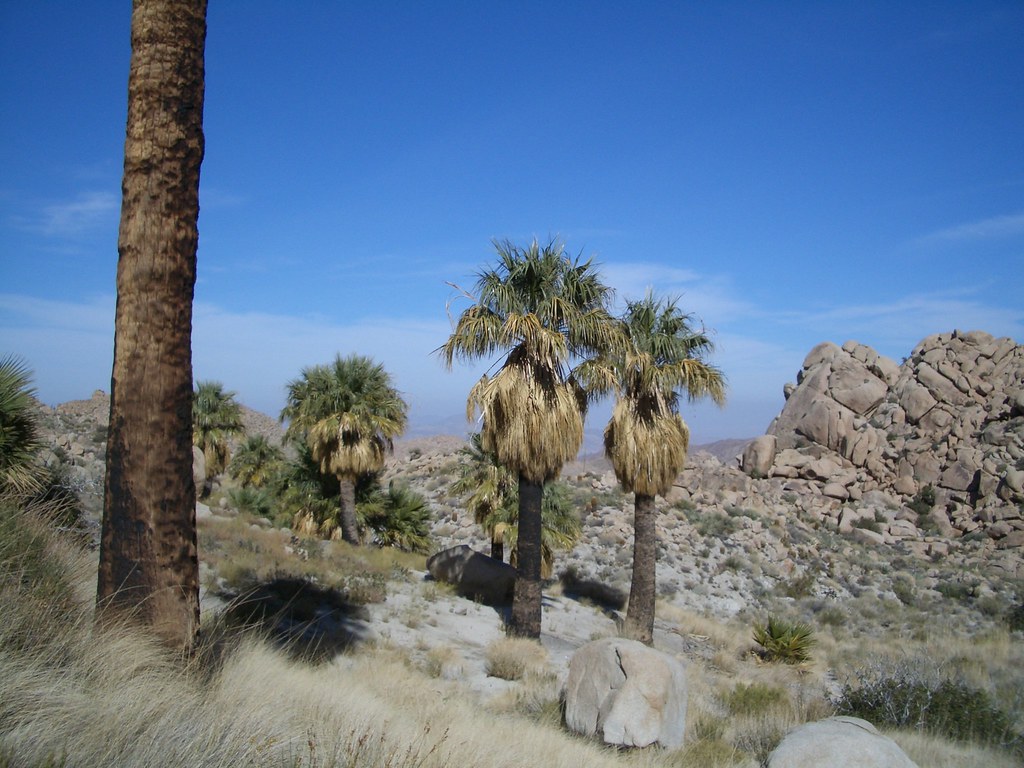 pictures 007 by tomteske, on Flickr pictures 007 by tomteske, on Flickr
Heading south
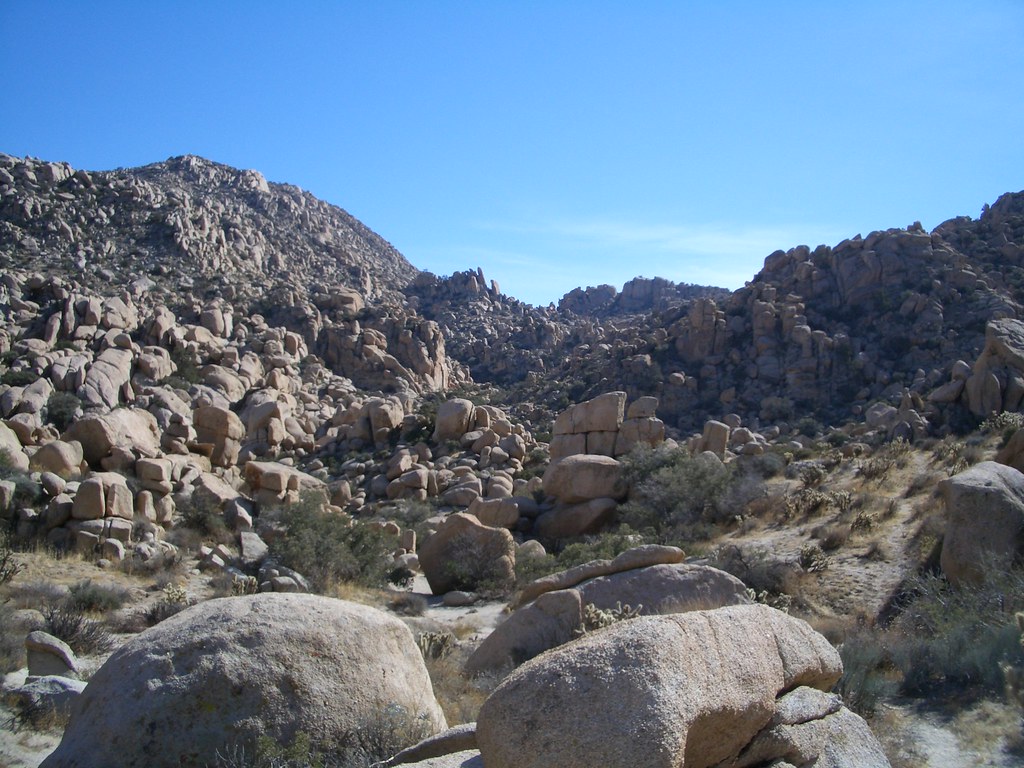 pictures 011 by tomteske, on Flickr pictures 011 by tomteske, on Flickr
Atop Peak 4004
 pictures 013 by tomteske, on Flickr pictures 013 by tomteske, on Flickr
|
|
|
link
|
|
tommy750 Posts: 1069
6/2/2017
|
Regarding the palms, Washingtonia filifera, they're the only endemic palm in the area. The tall skinny Washingtonia robusta (think Beverly Hills) is found in Baja alone and both are the most popular landscape palms in the world. There's a few ideas about how the palms catch on fire but the only documented ones are lightning and humans. The number of palm oases appears to be increasing and new ones are being discovered father and farther north of the border. There's a neat book on the subject entitled "Desert Palm Oasis" by James Cornett that I highly recommend. Tom
|
|
|
link
|
|
rockhopper Posts: 669
6/4/2017
|
The Native Americans did set fires below the Oaks in the higher elevations to rid the trees of insect infestations but not the Palm trees down in the desert. Lighting and wild fires are responsible for the burnt palm trunks we see today. Back a hundred to thousands of years ago the natives used to cut out the low hanging palm frons for shade from the desert sun. ( Imagine the dead palm frons below the crown extending all the way to the ground) Basically a untrimmed palm. The palms also indicated a local water source. Near these palm fron "Rooms" there would be a dug out or walk in well. These wells were buried when word of "strangers" entering the tribes territory.
|
|
|
link
|
|
ziphius Posts: 911
6/4/2017
|
Interesting (if true) that the number of palm oases north of the border are increasing, while the SW region has apparently gotten drier and water tables have fallen. Maybe there has been less browsing of palm seedlings in recent years, as burros, cattle, and other invasive herbivores have been eliminated from the backcountry. I'll have to check out that book by Cornett. - Jim
--
http://www.coyotelearning.org
|
|
|
link
|
|
tommy750 Posts: 1069
6/4/2017
|
ziphius wrote:
Interesting (if true) that the number of palm oases north of the border are increasing, while the SW region has apparently gotten drier and water tables have fallen. Maybe there has been less browsing of palm seedlings in recent years, as burros, cattle, and other invasive herbivores have been eliminated from the backcountry. I'll have to check out that book by Cornett. - Jim
Something is making the climate farther north more favorable. Apparently the same thing is happening with the Sabal palm in Florida. Hmmm, could it possibly be the unmentionable change??
Wonder as to the source of the new oases. Seed dispersion from landscape palms or from existing palm oases? Maybe DNA could answer that since it's my understanding a lot Washingtonia filifera landscape palms are heavily hybridized with W. robusta making a "filibusta." N.B., not by any means a palm expert but my brother worked for years at a exotic palm nursery so a modicum of trickle down.
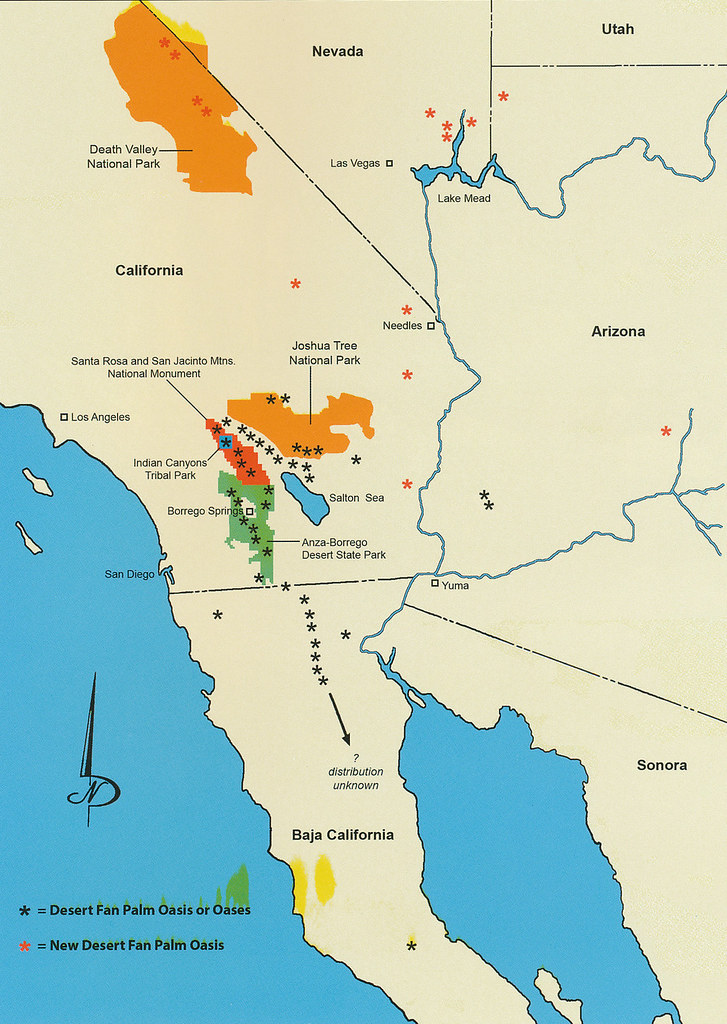 Cornett Page 71 by tomteske, on Flickr Cornett Page 71 by tomteske, on Flickr
|
|
|
link
|
|
ziphius Posts: 911
6/5/2017
|
A filabusta hybrid, heh? A better answer could not have been hoped for. Thanks for the map / info. 
--
http://www.coyotelearning.org
|
|
|
link
|
|
Britain Posts: 609
6/6/2017
|
Never thought about going up the mountain ( at my age prob wouldnt get all the way). Did come down from VOM to Mountain springs. I'll go up to the second palm grove. Ya I carry a head lamp and extra bats for those times you just cant get back before sundown.
So they can looked burnt from the drought? Interesting I thought perhaps a lighting strike. Its been 17 years so lets see whats changed next year.
edited by Britain on 6/6/2017
--
Cant drive 55
Britain
http://icorva.com
|
|
|
link
|